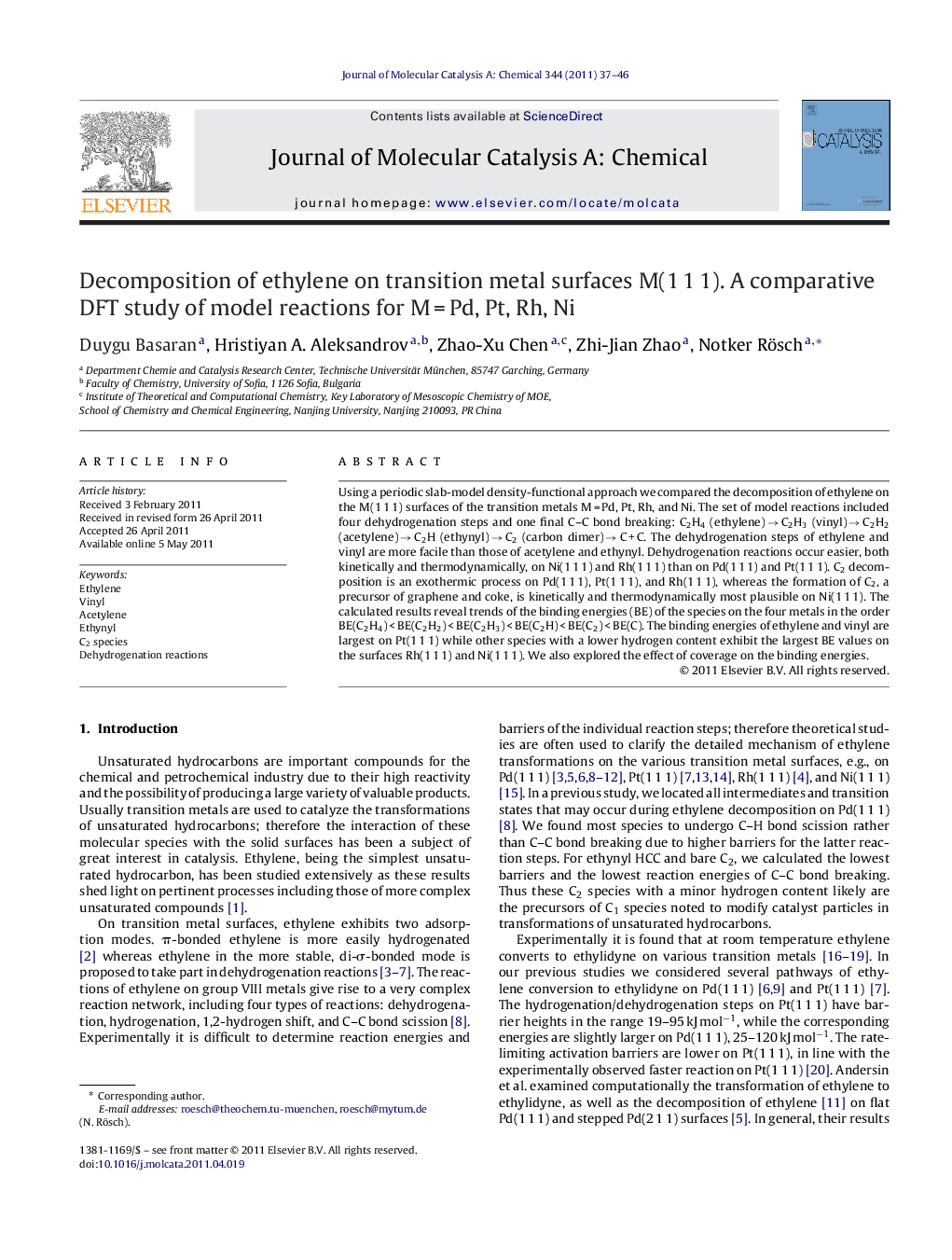| کد مقاله | کد نشریه | سال انتشار | مقاله انگلیسی | نسخه تمام متن |
|---|---|---|---|---|
| 66364 | 48428 | 2011 | 10 صفحه PDF | دانلود رایگان |

Using a periodic slab-model density-functional approach we compared the decomposition of ethylene on the M(1 1 1) surfaces of the transition metals M = Pd, Pt, Rh, and Ni. The set of model reactions included four dehydrogenation steps and one final C–C bond breaking: C2H4 (ethylene) → C2H3 (vinyl) → C2H2 (acetylene) → C2H (ethynyl) → C2 (carbon dimer) → C + C. The dehydrogenation steps of ethylene and vinyl are more facile than those of acetylene and ethynyl. Dehydrogenation reactions occur easier, both kinetically and thermodynamically, on Ni(1 1 1) and Rh(1 1 1) than on Pd(1 1 1) and Pt(1 1 1). C2 decomposition is an exothermic process on Pd(1 1 1), Pt(1 1 1), and Rh(1 1 1), whereas the formation of C2, a precursor of graphene and coke, is kinetically and thermodynamically most plausible on Ni(1 1 1). The calculated results reveal trends of the binding energies (BE) of the species on the four metals in the order BE(C2H4) < BE(C2H2) < BE(C2H3) < BE(C2H) < BE(C2) < BE(C). The binding energies of ethylene and vinyl are largest on Pt(1 1 1) while other species with a lower hydrogen content exhibit the largest BE values on the surfaces Rh(1 1 1) and Ni(1 1 1). We also explored the effect of coverage on the binding energies.
Figure optionsDownload high-quality image (219 K)Download as PowerPoint slideHighlights
► Theoretical study of ethylene decomposition on M(1 1 1) surfaces, M = Pd, Pt, Rh, Ni.
► Species with more H atoms dehydrogenate more easily than species with fewer H.
► Dehydrogenation occurs easier on Ni(1 1 1) and Rh(1 1 1) than on Pd(1 1 1) and Pt(1 1 1).
► Reactivity of Pd (Rh) regarding ethylene decomposition similar to that of Pt (Ni).
► Pd, Pt, and Rh favor C2 decomposition whereas on Ni C2 formation is favored.
Journal: Journal of Molecular Catalysis A: Chemical - Volume 344, Issues 1–2, 17 June 2011, Pages 37–46